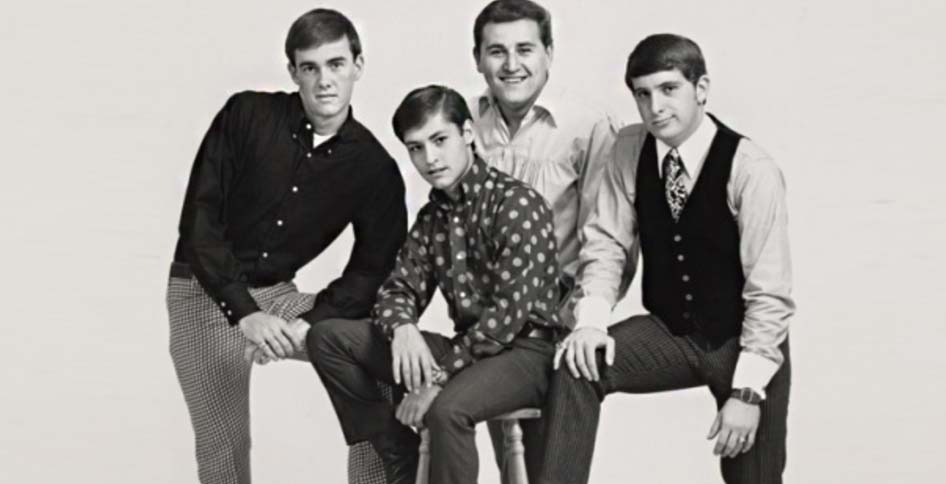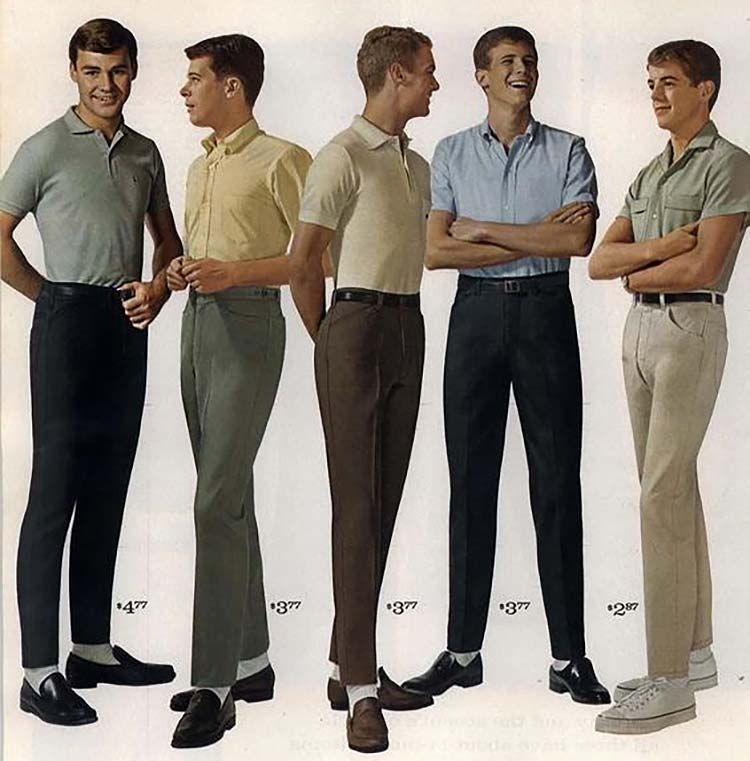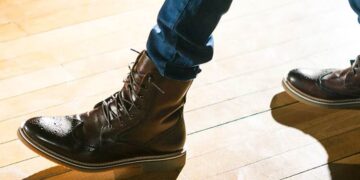
Men’s fashion in the 60s was a time of transition and revolution in the world of clothing.
This period was marked by a unique mix of influences, ranging from the conservatism da 50s ate a creative freedom e a rebeldia that were beginning to emerge. The fashion of the 1960s reflected the social, cultural and political changes of the time, resulting in a diversity of styles that defined the decade.
Fashion in the 60s

In the early 1960s, men still wore suits and ties as part of a more formal dress code. However, this decade brought a series of innovations in men’s fashion. The cut of suits became more fitted, with shorter jackets and narrower-legged pants, a marked contrast to the wider suits of the previous decade. Slim-cut suits became a symbol of modern elegance.
High-waisted pants, accompanied by shirts of different styles, including the Polos that were already on the rise, were also a hit in the men’s look of the 60s.

One of the most iconic men’s fashion figures of the 1960s was Beatles star John Lennon, who helped popularize pieces such as turtlenecks, corduroy jackets and round sunglasses. These elements added a dose of style and attitude to clothing choices.
The influence of subcultures was also felt in this decade. The mod aesthetic brought with it a futuristic look, with geometric patterns, bright colors, short boots and short military-style jackets. Meanwhile, the hippie movement introduced a more relaxed and natural approach to fashion, with bell-bottoms, vests, floral prints, frilly shirts and ethnic-inspired elements.

The decade of 60 also witnessed the rise of the preppy This look had its roots in the clothes worn by students at Ivy League universities in the United States. Polo shirts, sweaters tied around the shoulders, khaki pants and loafers were key elements of this look, which conveyed an image of high class and sophistication.
At the end of the 1960s, men’s fashion began to reflect growing experimentation and rebellion. The hippie movement influenced the adoption of more informal and comfortable clothing, with an emphasis on individuality. The rise of the punk movement at the end of the decade brought out a more daring and transgressive aesthetic, with leather jackets, ripped jeans, T-shirts printed with provocative messages and striking accessories such as chains and studs.

In short, 1960s men’s fashion was a decade of diversity and transformation, with a variety of styles ranging from conservatism to radical experimentation. This decade influenced many of the trends that are still relevant in contemporary men’s fashion, leaving an indelible mark on the world of menswear.


















